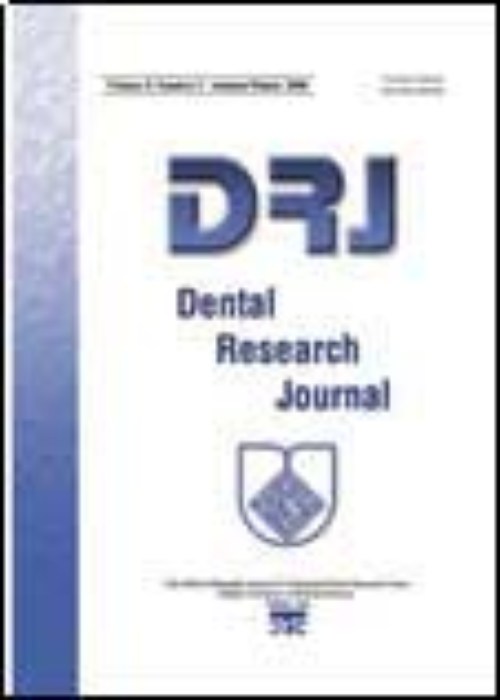Effects of three surface conditioning techniques on repair bond strength of nanohybrid and nanofi lled composites
Author(s):
Abstract:
Background
Repair bond strength of different composite resins has been assessed in few studies. In addition, reports on the effi cacy of surface treatments are debated. Therefore, this in vitro study was conducted to evaluate the effect of three surface treatments on two nanocomposites versus a microhybrid composite. Materials And Methods
In this experimental study, 135 composite blocks (45 specimens per composite) of microhybrid (Filtek Supreme Z250, 3M ESPE, USA), nanohybrid (Filtek Supreme XT, 3M ESPE), and nanofi lled (Filtek Supreme Z350, 3M ESPE) were thermocycled (5000 rounds) and then surface roughened (except in a control group of 9 specimens of three composite types). Each composite type was divided into three subgroups of surface treatments: (1) Bur abrading and phosphoric acid (PA) etching, (2) sandblasting and PA etching, and (3) hydrofl uoric etching and silane application (n = 15 × 9, complying with ISO TR11405). Composite blocks were repaired with the same composite type but of a different color. Microtensile bond strength and modes of failure were analyzed statistically using two-way analyses of variance, Tukey and Chi-square tests (α = 0.05).Results
There were signifi cant differences between three composite resins (P < 0.0001) and treatment techniques (P < 0.0001). Their interaction was nonsignifi cant (P = 0.228). The difference between nanofi lled and nanohybrid was not signifi cant. However, the microhybrid composite showed a signifi cantly higher bond strength (Tukey P < 0.05). Sandblasting was signifi cantly superior to the other two methods, which were not different from each other.Conclusion
Within the limitations of this in vitro study, it seems that microhybrid composite might have higher repair strengths than two evaluated nanocomposites. Among the assessed preparation techniques, sandblasting followed by PA etching might produce the highest bond strength.Keywords:
Language:
English
Published:
Dental Research Journal, Volume:12 Issue: 6, Nov 2015
Page:
554
https://magiran.com/p1469488
دانلود و مطالعه متن این مقاله با یکی از روشهای زیر امکان پذیر است:
اشتراک شخصی
با عضویت و پرداخت آنلاین حق اشتراک یکساله به مبلغ 1,390,000ريال میتوانید 70 عنوان مطلب دانلود کنید!
اشتراک سازمانی
به کتابخانه دانشگاه یا محل کار خود پیشنهاد کنید تا اشتراک سازمانی این پایگاه را برای دسترسی نامحدود همه کاربران به متن مطالب تهیه نمایند!
توجه!
- حق عضویت دریافتی صرف حمایت از نشریات عضو و نگهداری، تکمیل و توسعه مگیران میشود.
- پرداخت حق اشتراک و دانلود مقالات اجازه بازنشر آن در سایر رسانههای چاپی و دیجیتال را به کاربر نمیدهد.
In order to view content subscription is required
Personal subscription
Subscribe magiran.com for 70 € euros via PayPal and download 70 articles during a year.
Organization subscription
Please contact us to subscribe your university or library for unlimited access!


